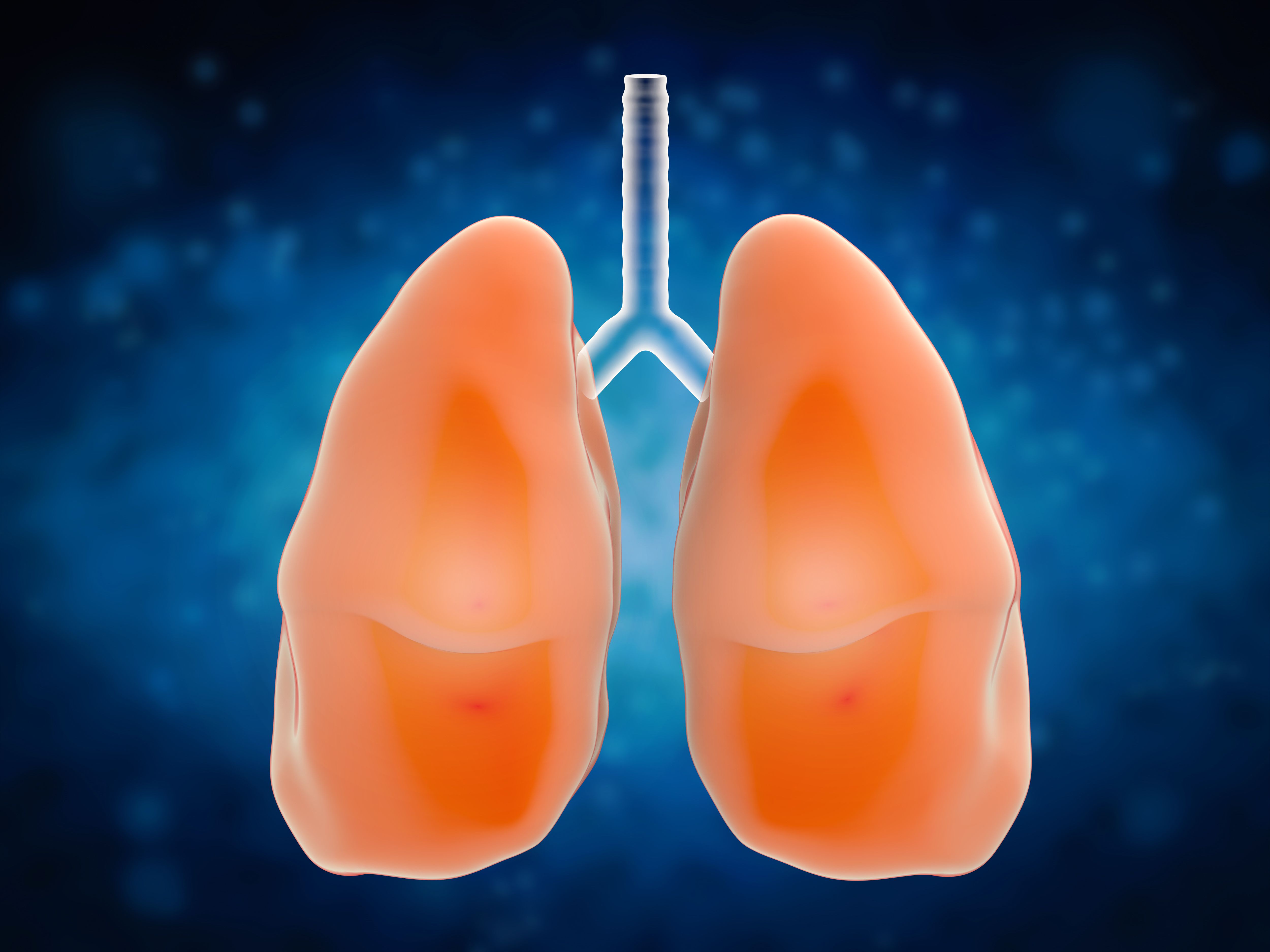News
Article
Max Hypofractionated Concurrent Chemoradiation Dose Identified in NSCLC
Author(s):
Researchers claim to have determined the maximum=tolerated dose and usage of hypofractionated concurrent chemoradiation with an adaptive stereotactic ablative radiotherapy boost for patients with locally advanced unresectable non-small cell lung cancer, according to recently published findings.
Researchers have determined the maximum-tolerated dose and usage of hypofractionated concurrent chemoradiation with an adaptive stereotactic ablative radiotherapy for certain patients with lung cancer.

Researchers have determined the maximum-tolerated dose (MTD) and usage of hypofractionated concurrent chemoradiation with an adaptive stereotactic ablative radiotherapy (SABR) boost for patients with locally advanced unresectable (cannot be surgically removed) non-small cell lung cancer (NSCLC), according to recently published findings.
“Hypofractionated concurrent chemoradiation with an adaptive stereotactic ablative radiotherapy boost to 70 Gy in 15 fractions holds promise as an effective and well-tolerated regimen for further exploration and integration with immunotherapy in patients with locally advanced, unresectable NSCLC,” researchers wrote in an investigation published in the journal JAMA Oncology.
Discussing the significance of this research, the authors noted that “intrathoracic (within the area of the chest) progression remains the predominant pattern of failure in patients treated with concurrent chemoradiation followed by a consolidation immune checkpoint inhibitor for locally advanced, unresectable non–small cell lung cancer (NSCLC).”
In an editorial comment published by JAMA Oncology alongside the study, it was explained that “stereotactic body radiotherapy (SBRT), also known as stereotactic ablative radiotherapy (SABR), is associated with improved local control and overall survival compared with conventionally fractionated, nonablative regimens in early-stage non–small cell lung cancer (NSCLC).With modern imaging and treatment-delivery technology, the biologically effective doses … of radiation delivered to small volumes of tumors can be substantially increased by using SBRT with higher doses per fraction in fewer numbers of fractions.”
Researchers conducted an early-phase radiation dose-escalation nonrandomized control trial at the UCLA Health Jonsson Comprehensive Cancer Center in Los Angeles with the participation of 28 patients with stage 2 or 3 NSCLC. Patients, with a median age of 70 and of whom 57% were male, were enrolled and treated between May 2011 and May 2018, with a median follow-up of 18.2 months. Twenty-four (86%) patients had stage 3 NSCLC, and patients were divided into three cohorts: low- (10 patients), intermediate- (nine patients) and high-dose (nine patients) SABR boost.
“All patients first received 4 Gy × 10 fractions followed by an adaptive SABR boost to residual metabolically active disease, consisting of an additional 25 Gy (low, 5 Gy × 5 fractions), 30 Gy (intermediate, 6 Gy × 5 fractions) or 35 Gy (high, 7 Gy × 5 fractions) with concurrent weekly carboplatin/paclitaxel,” researchers noted, explaining that patients were given higher SABR boost dosages if dose-limiting toxic effects — which in this case were pulmonary, gastrointestinal or cardiac toxic effects of grade 3 or higher or any grade 4 or higher nonhematologic toxic events) were found in fewer than 33% of the cohort within a 90-day follow-up window. Researchers reported that there were no grade 3 or higher side effects in the intermediate-dose cohort.
MORE: Keytruda Plus Chemoradiation Shows Promise in Locally Advanced NSCLC
There were two deaths in the high-dose cohort, and rates of nonhematologic acute and late (after 90 days) grade 3 or higher side effects were 11% and 7%, respectively. Two-year local control rates in the low-, intermediate- and high-dose cohorts were 74.1%, 85.7% and 100%, respectively, while the two-year overall survival (how long a patient lives following treatment regardless of disease status) rates were 30%, 76.2% and 55.6%, respectively.
MORE: Concurrent Chemoradiotherapy With Proton Radiation Reduces Short-Term Side Effects
Analyses conducted from January 2023 to September 2023 were reported in JAMA Oncology, and according to the trial’s listing on clinicaltrials.gov the trial is estimated to be completed in January 2026.
For more news on cancer updates, research and education, don’t forget to subscribe to CURE®’s newsletters here.




